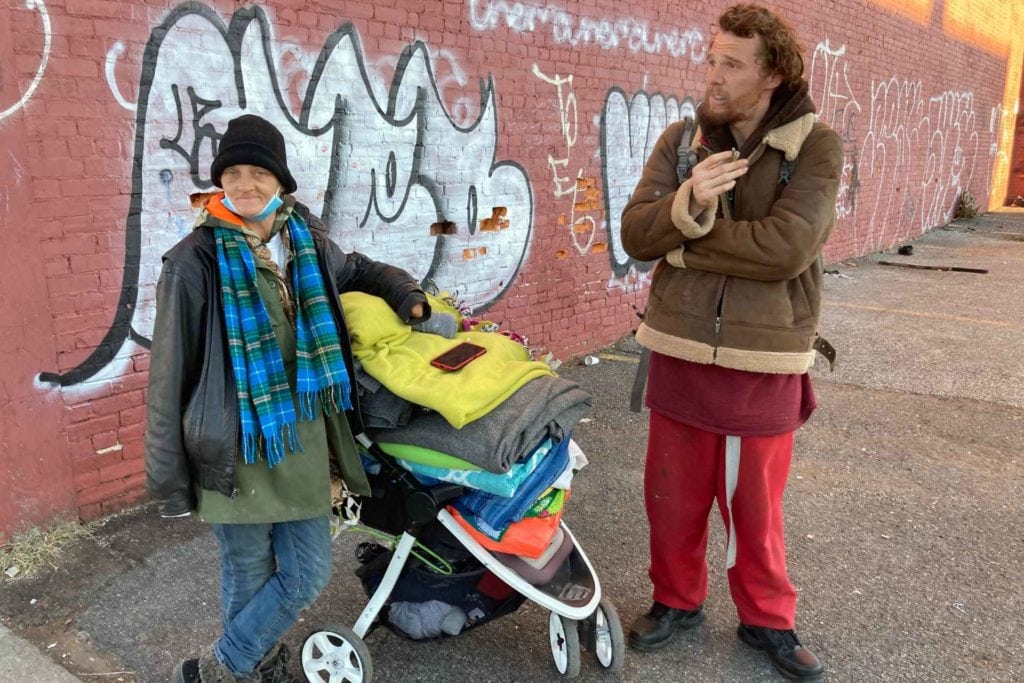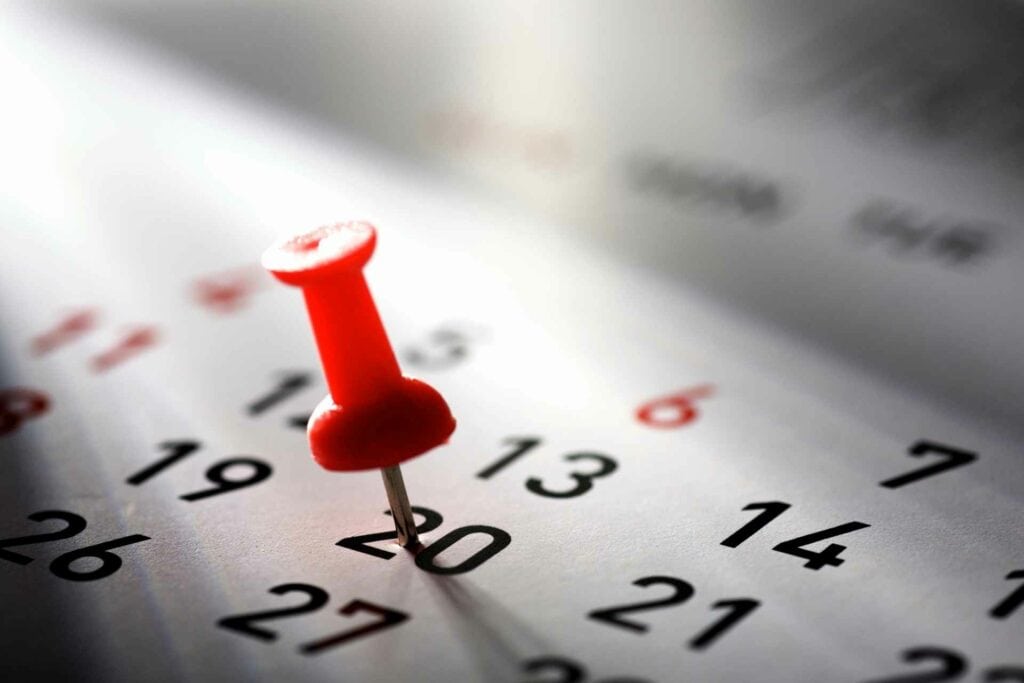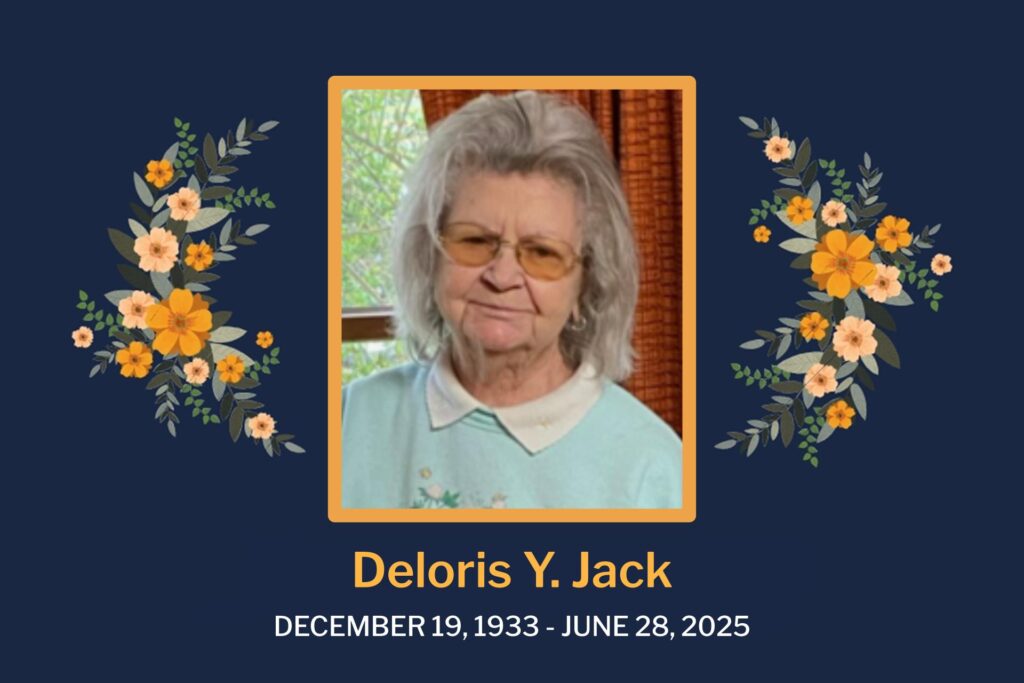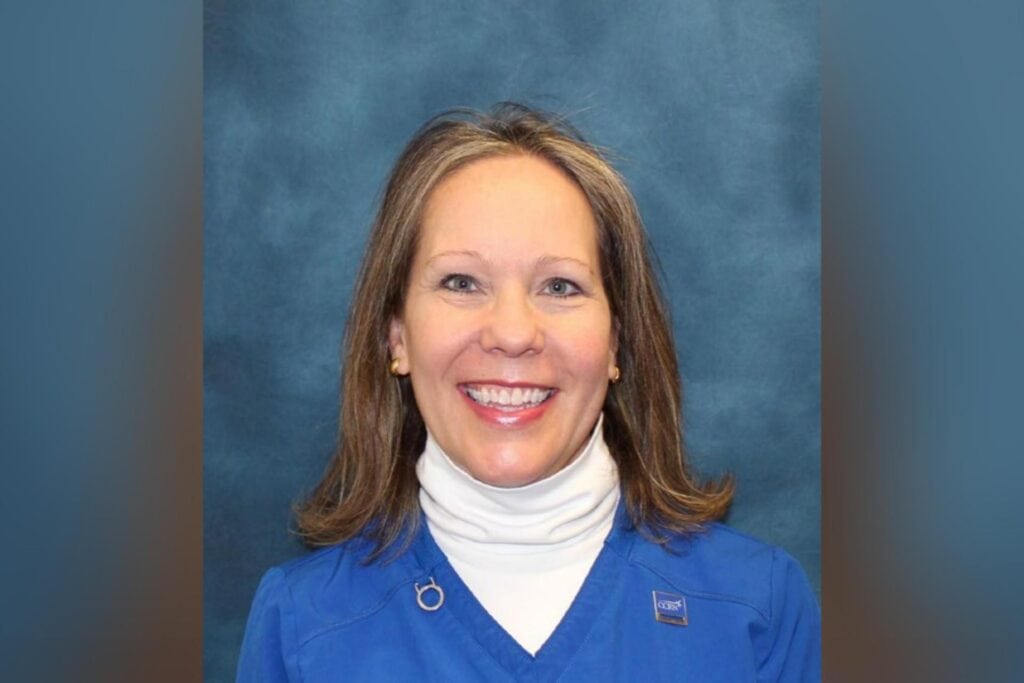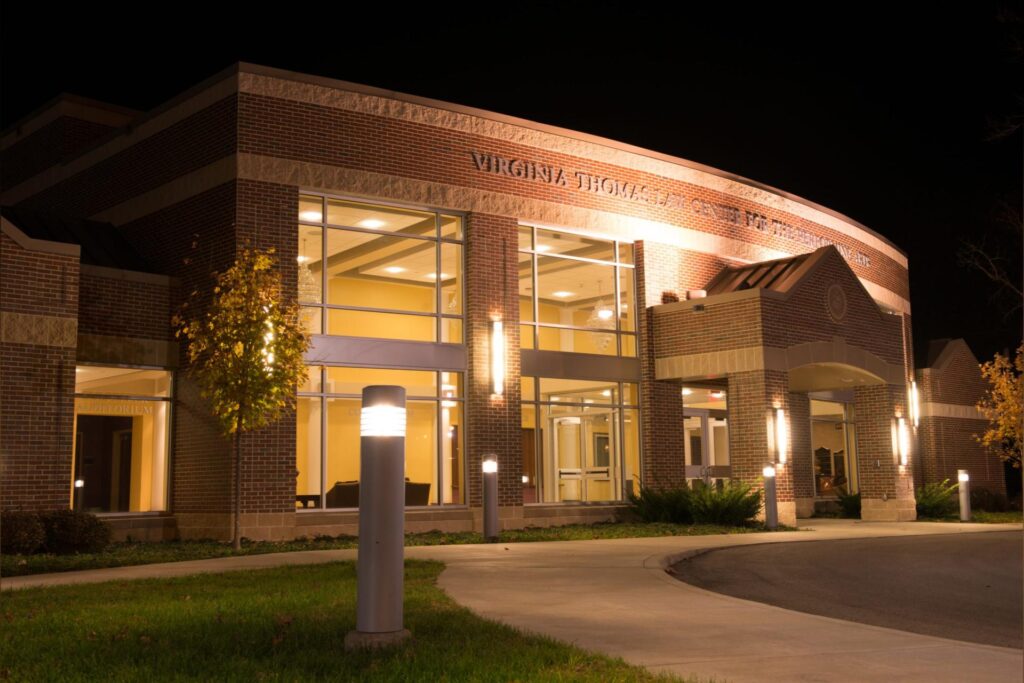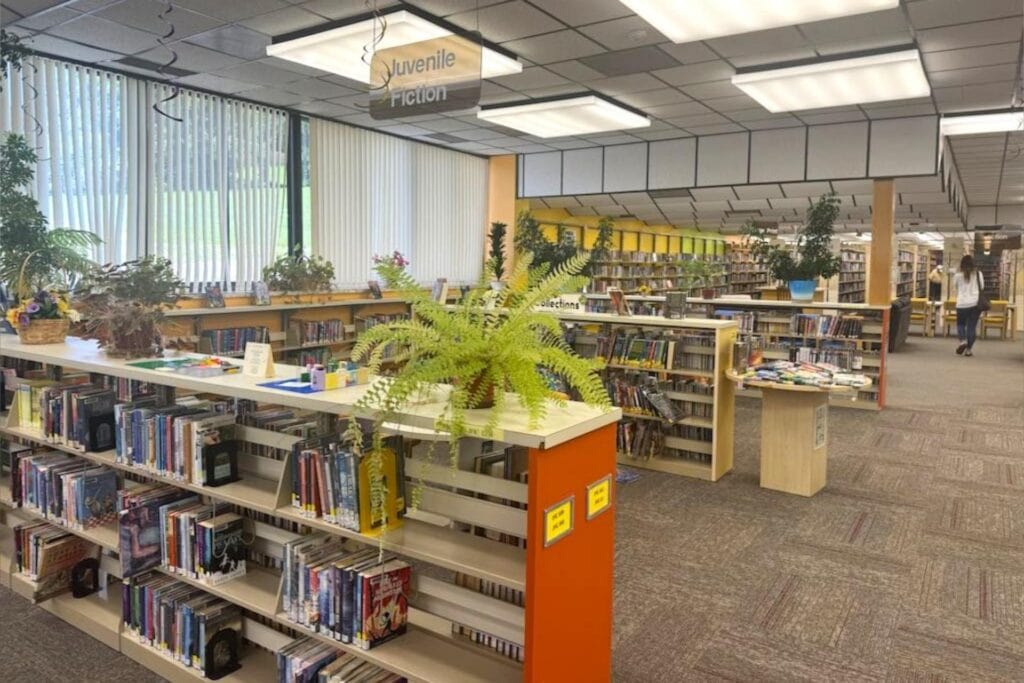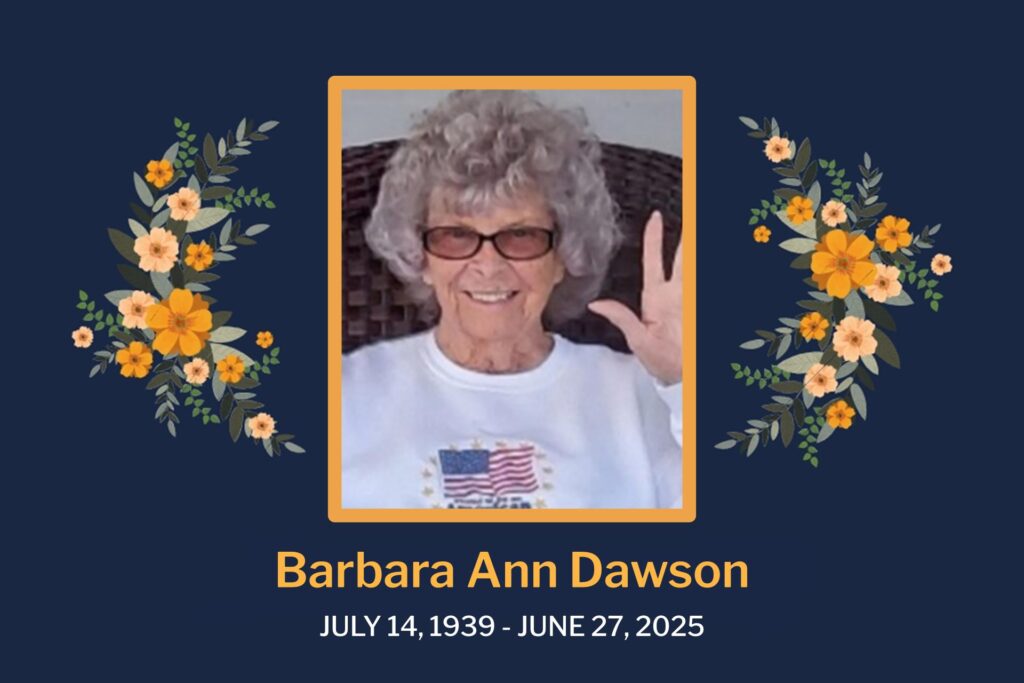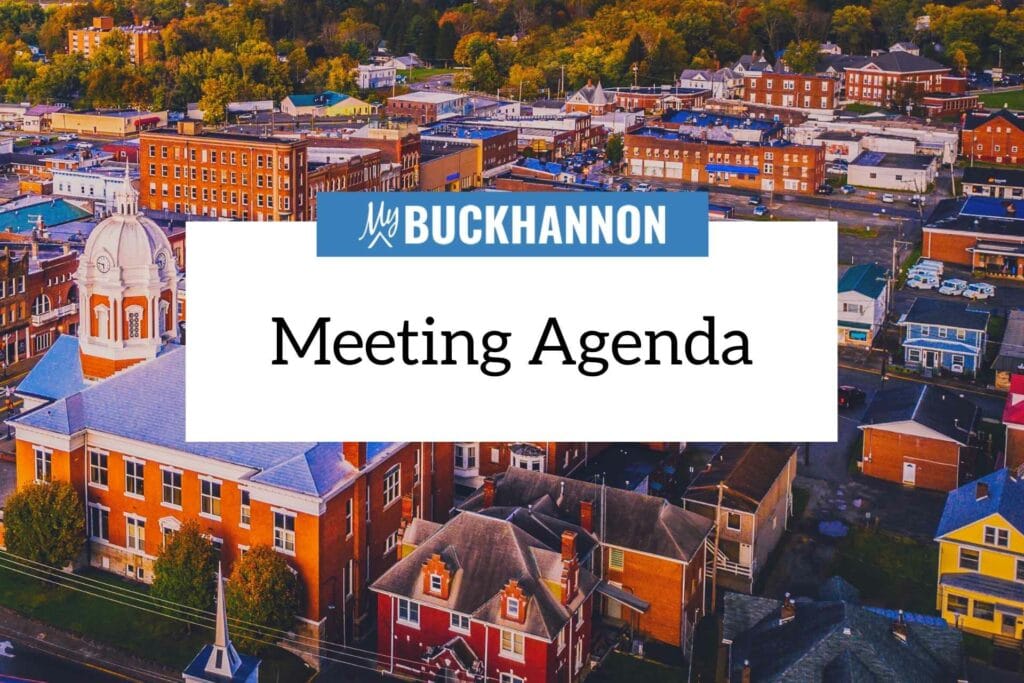Editor’s note: This story was originally published by Mountain State Spotlight. Get stories like this delivered to your email inbox once a week; sign up for the free newsletter at https://mountainstatespotlight.org/newsletter.
By Dan Lawton, Mountain State Spotlight
HUNTINGTON — Angela Oakley, wearing a white, floral headband in her long, brown hair, stood outside Harmony House day shelter with everything she owned. Her shopping cart held an umbrella, backpacks, tents, camping chairs, blankets and an entire roll of toilet paper, all neatly organized.
Oakley is part of the rapidly expanding unsheltered population in the state. Like many, she’s worried about how she’ll survive the winter — her second outside since losing her job and being evicted.
“My hands get cold, my feet get cold, we have blankets, and we get as close as possible and shiver all night,” she said, describing how she keeps warm.
As winter approaches, the number of people living outdoors in West Virginia continues to swell. Although the state has one of the lowest homelessness rates in the country, the number of unsheltered people — those living permanently outside — is the highest it’s been since 2015.
The bulk of the increase is in urban areas: Morgantown, Huntington and Charleston have all seen a significant uptick in unsheltered homelessness this year. Morgantown and Huntington have responded by increasing funding to warming shelters, while Charleston has not.
Those living on the streets describe a bleak existence in which they constantly battle the elements while navigating the stigma of homelessness.
“When it’s cold, I just walk all night to stay warm,” said a man named Michael, who didn’t want to share his last name. He was slumped down outside Harmony House with an open bottle of orange juice and a few meager possessions. Tears pooled in his eyes as he described eking out life on the street. He said he didn’t feel safe going to one of the local shelters.
‘Pain and Want’
Homeless advocates in all three cities agree the number of people living outside is surging, although it’s challenging to collect perfect data due to the transient nature of the population.
According to the annual Point-In-Time count, which attempts to capture the entire homeless population in specific regions in one evening, the number of unsheltered people statewide climbed 133% between 2016 and 2021.
But locally, advocates say the numbers have grown even more since then.
Charleston social service providers say the 75 people outside is a “significant increase” over what the area typically sees. Rachael Coen, chief program officer of the West Virginia Coalition to End Homelessness, says the number of people sleeping outside in Monongalia County has nearly doubled, from 44 earlier this year to around 80 now. In the Huntington area, the unsheltered population has ballooned from 73 in February to currently about 130, according to data provided by Harmony House day shelter.
Sydnee McElroy, a physician who volunteers at Harmony House, said the population increase means more people are at risk of health problems due to cold exposure this winter.
She said that she’s already seen patients with frostbite this year and typically sees many burn wounds during the winter due to fires lit for warmth.
McElroy believes many of those people are newly homeless and may not have the survival skills to make it through the winter.
“Our biggest fear is how many people we will lose this year,” she said.
Although there aren’t many reported incidents of people dying from cold exposure in the state, a Charleston man froze to death in 2017, and another with dementia died last year in a shed after walking out of a Huntington hospital.
Experts said it is hard to be sure what causes an increase in a certain segment of homelessness. Substance abuse, domestic violence, eviction, lost jobs and lost relationships are just a few of the myriad factors that can lead to someone living on the streets.
Amanda Coleman, the executive director of Harmony House, said she has two theories about what’s behind the increase in unsheltered homelessness in the area.
The first is the ending of the Mountaineer Rental Assistance Program, which was shut down in October after the state failed to spend some of the federal funds it was allocated. Numerous other homeless advocates cited its demise as leaving many renters in the lurch and increasing the number of people living on the streets.
“The MRAP program ended really fast. There were a lot of folks who really had the impression it would go on for another year,” said Janette Lewis, community outreach coordinator with the United Way in Monongalia County.
The West Virginia Housing Development Fund, which managed the program, did not respond to a call for comment.
The second is a jump in methamphetamine use, which is causing an increase in mental health problems. In 2015, about one in twenty overdose deaths in West Virginia involved methamphetamine use, according to the West Virginia Office of Drug Control Policy. Last year, it was one out of every two.
Mitch Webb, executive director of the Huntington Mission, said he has seen the effects of more methamphetamine use firsthand.
“I’ve been here eight years, and when a person was high on opiates, my biggest problem was they were going to pass out, but with meth, there’s a lot more acting out and paranoia, which might make you not want to come inside,” he said.
Webb, whose shelter currently has about 25 empty beds, also said that the number of people who need mental health treatment at the mission has more than doubled since 2019.
According to Coleman, many living outside have suffered from devastating trauma in their past, which has an indelible effect on their day-to-day functioning.
“We have thousands of people who, from the day they are born, have pain and want. Their choices are constrained from day one. They need us to help them,” she said.
‘An unfunded labor of love‘
While there are warming centers in Huntington, Charleston and Morgantown for unsheltered people during the winter, they don’t all provide the same services or receive the same level of city support.
Warming centers are typically temporary spaces many cities offer during the winter months that operate with fewer rules than more traditional day shelters.
Both Huntington and Morgantown recently announced funding streams of over $100,000 for their centers, both of which will be open every day until spring. The facility in Huntington, a church adjacent to the mission, will be open in the evenings while the Morgantown center is open around the clock.
But Charleston, West Virginia’s largest city, doesn’t provide any city money to fund its warming center. And the lack of resources means the nonprofits that run it can only afford to open its doors at the Salvation Army when the temperature drops below 15 degrees.
“It’s safe to say this is an unfunded labor of love,” said Traci Strickland, the executive director of the Kanawha Valley Collective.
Juan Rose, who has been living on the streets of Charleston for four years, said he’s dropped in numerous times during frosty weather and called the center an “asset.”
“They did a great thing,” he said.
Joe Solomon, an incoming member of the City Council, thinks Charleston should do more for the unsheltered population during the winter.
He said in an interview that he wants to find a way for the city to open up its four community centers in the winter to folks living on the street.
Solomon, who runs the overdose prevention organization SOAR, drew a parallel between Charleston’s treatment of the homeless and its restrictions on needle exchange programs.
“The city that says that it must be 15 degrees until we give someone a cot and a bowl of chili is the same city that makes it illegal if you try to stop somebody getting HIV by giving them a clean syringe,” he said.
A city spokeswoman declined to make Mayor Amy Goodwin available for an interview and said in a statement that the city “supports our social service providers and coordinates with them when warming shelters are needed.”
‘They shun you because you’re homeless‘
Regardless of where you go, unsheltered people tell similar stories of feeling degraded, minimized and cast aside, especially during the harsh winter months.
“People automatically think you’re an addict or you’re lazy,” said a Huntington man, who declined to use his name.
His friend, Nova, pushed a shopping bag full to the brim with blankets. A cancer survivor, she said she was waiting for approval for housing aid.
“Tents are lifesavers,” she said. “And you have to always find something to put between yourself and the ground.”
A few miles away, tents peppered the banks of the Ohio River. Rules for campers — “leave no trace,” “steal no belongings” — were spray painted on a nearby flood wall next to a tribute to someone who had recently died of an overdose. Andy Bryant sat warming himself in the sun, everything he owned next to him in a black duffle bag.
“I’ve got no ID, no ride and no phone,” he said, describing some of the logistical challenges he faced as a man next to him fiddled with a syringe.
“If you got something that you like to do, you don’t self-medicate,” Bryant added.
Fifty miles away in Charleston, similar stories were shared among a handful of people congregating outside of St. John’s Episcopal Church.
Michele Pauly was one of them. She ended up living on the streets after her husband died and she lost her house. Pauly said she spends most nights in a different location, trying to avoid getting a citation from the police department.
“We try to find an overhang or a place to spread out a sleeping bag, but it’s hard because we are constantly being run off,” she said.
She pulled out a trespassing ticket she had been issued just the other day for sleeping in front of a building downtown.
Others voiced similar concerns and described a world they felt was hostile to their very existence. They chronicled unsafe and unsanitary shelters, nightmarish bureaucracies, destroyed relationships, chronic illnesses and a gnawing sense of always being under suspicion and without dignity.
“They shun you because you’re homeless,” said a man named Steve, who declined to give his last name. “But it’s not right. They pick on you, and they call you a homeless piece of shit.”
“I mean, there are empty buildings all over this town,” he said between puffs of a cigarette. “You need to ask them why they can’t just open up a shelter there.”
Reach reporter Dan Lawton at danlawton@mountainstatespotlight.org.
